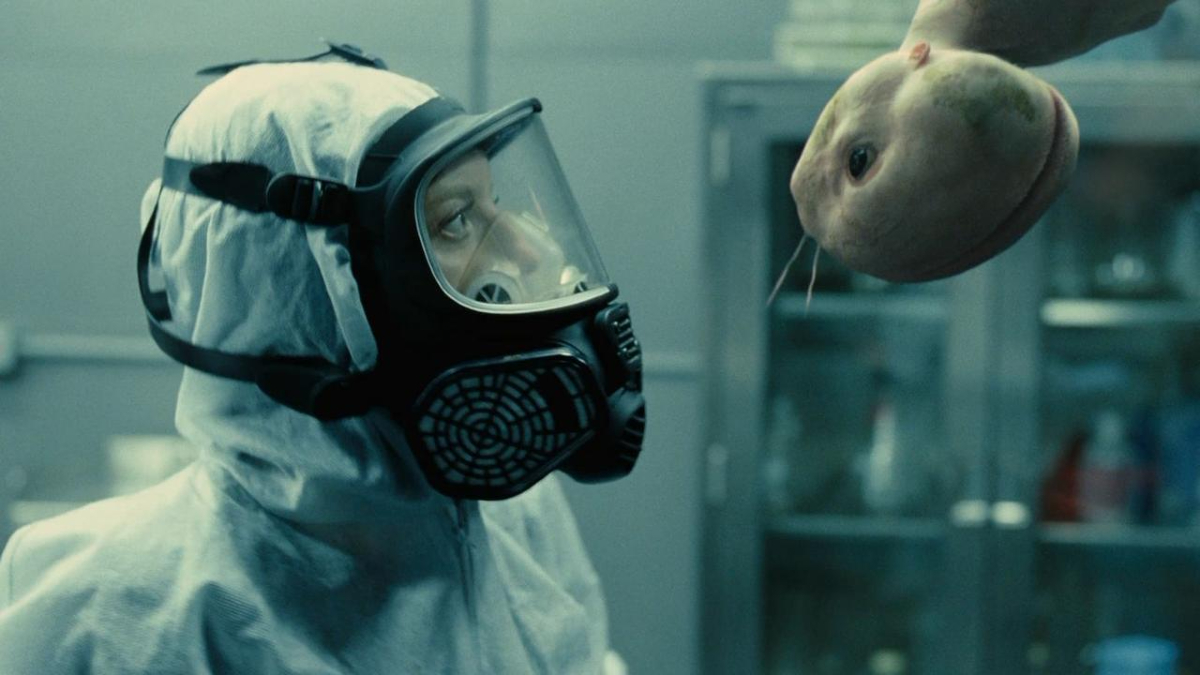To say that Splice underperformed at the box office when it was released in 2010 would be an understatement. But that’s what happens when you carelessly release a psychosexual sci-fi horror movie about a genetically engineered human-animal hybrid in the middle of the summer.
Which is exactly what Warner Bros. did on June 4, 2010, when the studio dropped Splice in theaters nationwide during a movie season typically dominated by blockbusters—not exactly prime real estate for a mid-budget genre film with splashy creature effects. Splice emerged from its opening weekend in eighth place, obliterated by the fourth Shrek movie (in its third week, no less) and fellow new releases The Killers (that’s the one with Ashton Kutcher and Katherine Heigl) and Get Him to the Greek (an absolutely cursed film). Splice deserved so much better.
Splice centers on the cheekily named Clive (Adrien Brody) and Elsa (Sarah Polley), brilliant genetic engineers and partners in both work and life. When the film begins, Clive and Elsa are unveiling the results of their latest experiment in splicing animal DNA: Fred and Ginger, a pair of phallic, worm-like creatures developed to mate with one another and reproduce. Thrilled with their success, Clive and Elsa decide to move forward with their next project, a humanoid created by splicing animal and human DNA. The result is Dren, an adorable female creature that develops physically and mentally at a much faster rate than humans.
As Dren (played at maturity by Delphine Chanéac) rapidly grows and evolves, Elsa and Clive develop an intimate bond with her that threatens to upend their work and their relationship. Things get more complicated and precarious for the couple when they learn Dren is a carnivore and she begins acting out on her biological needs. Distracted by Dren, Elsa and Clive fail to notice when Ginger spontaneously develops male reproductive organs, a natural phenomenon that’s been documented in certain animal species. During a major presentation, Fred and Ginger violently attack and kill each other—foreshadowing Dren’s ultimate evolution.

Splice was the third film from Vincenzo Natali, a Canadian filmmaker best known for his directorial debut, the 1997 psychological horror film Cube. In a recent interview with IndieWire, Natali described making Splice as a “difficult birth” that took a toll on his health. “If I didn’t care about the movie as much as I care about my own children, my hair wouldn’t have turned gray,” Natali said. “It’s because I wanted this thing to exist so badly. Making [Splice] was so stressful, it made me sick. I had something no doctor could identify, which magically vanished the day after the film opened. It had to be psychosomatic.”
14 years later, people are discovering (and rediscovering) Splice on Max, where it’s been sitting in the top 10 for the past two weeks. This strange, seductive horror movie executive produced by Guillermo del Toro and featuring some of the most fascinating creature designs of the modern era (two aspects that would be huge selling points today) is finally getting the attention it deserves. Although mainstream audiences weren’t rushing to see it in 2010, among horror nerds and genre aficionados, Splice definitely felt like a must-see. In the months leading up to its release, movie blogs published concept art from the film, and I remember being obsessed with the designs for Dren, which looked so transgressive and Cronenbergian—simultaneously grotesque and sexual. (You can still see the concept art on Natali’s official website.)
Splice is a clever update on the classic Frankenstein story with a psychosexual streak inspired by Alien and, yes, David Cronenberg. Those influences are evident throughout, but particularly in a pivotal scene that caused some delays in production. “Primarily, it was the fact Adrien Brody’s character has sex with the creature,” Natali told IndieWire. “That was a deal breaker for a lot of people.” Natali was so worried that the studio would cut the scene from the finished film that he added a stipulation to his contract that forbid its removal.
“It was the raison d’etre of the movie to me,” Natali explained, “not just because it’s sensational but because I felt like if we’re going to tell a 21st-century retelling of Frankenstein, we need to push it into the 21st century. This was a story about life and birth—and sex was always going to be part of that equation. To dance around it would’ve been cowardly. That’s what excited me.”
It might have been too strange for some, but the relationship between Dren and Clive and all its uncomfortable implications was, to echo Natali, a huge part of what made Splice so effective and compelling.









Published: Jun 11, 2024 05:34 pm